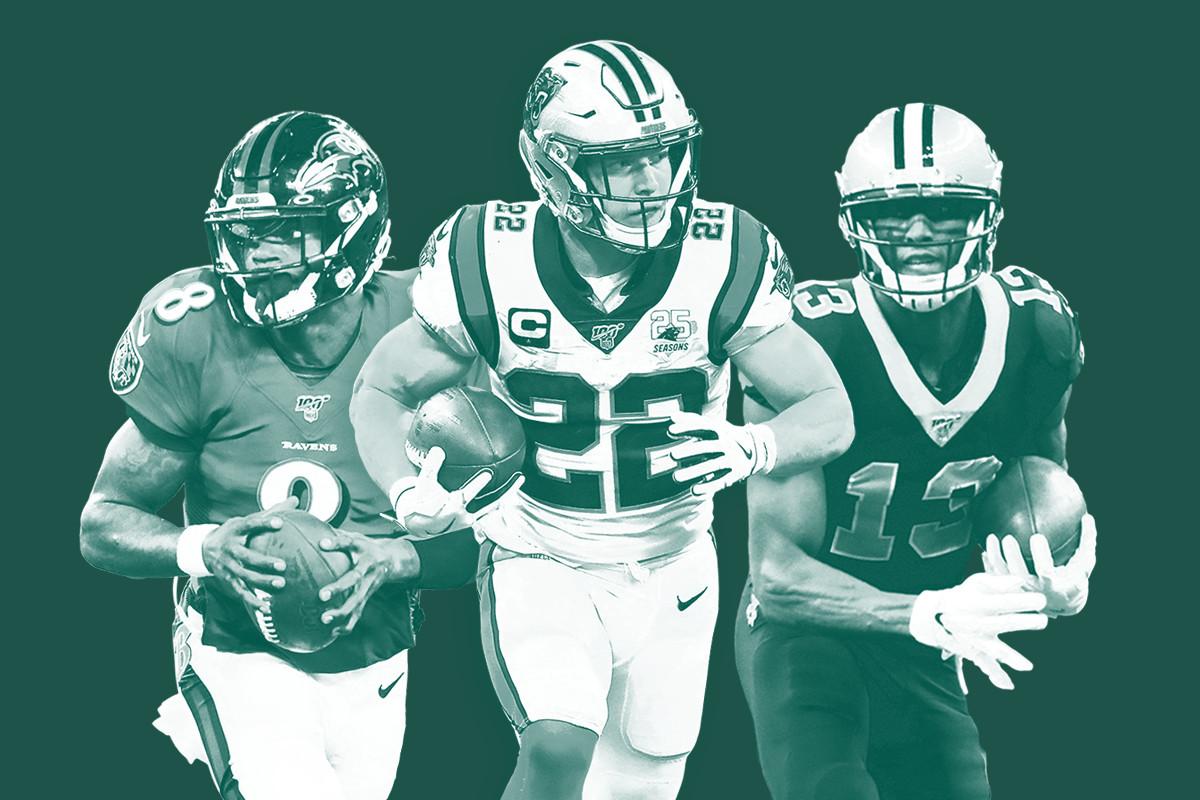
This week, after five months of an unprecedented offseason, NFL players who cleared the league’s initial COVID-19 testing protocol returned to their team facilities and saw their teammates and coaches for the first time this season. They arrived at reconfigured locker rooms, heard about opt-outs, and possibly considered their own. Still, there were enough typical story lines to make the beginning of training camp feel familiar: Players compared it to the first day of school and declared themselves in the best shape of their lives. Bill Belichick made an obscure Rutgers football reference, proving that some things remain the same.
A lot has changed, though. What players and coaches are going through right now is training camp in name only, and more like the first phase of normal offseason programming with strength and conditioning work and walkthroughs.
“We’re really not in training camp yet. ... Training camp practice one for me is August 14,” Broncos coach Vic Fangio said Tuesday. “Everything prior to that is more offseason-type stuff with more hours than they’re used to in the offseason.”
Belichick made similar comments, describing what the Patriots are doing this week as a combination of normal post-free-agency meetings with new players (Cam, meet Bill; Bill, meet Cam!) and minicamp. The NFLPA was concerned that a quick return to heavy on-field work in training camp would lead to a wave of injuries—players weren’t able to train normally in the offseason since OTAs and minicamps were canceled and many gyms were closed—so it won’t be until August 17 that teams can hold practices with players wearing pads.
“In a couple weeks, close to a couple weeks I’d say, we’ll actually be in training camp,” Belichick said.
In past years, the ramp-up period before padded practices begin has been five days. This year it will be three weeks. As a result, teams will have less time on the field before the regular season begins. The maximum number of padded practices teams can have is 14, two fewer than the 16 agreed to in the collective bargaining agreement signed this March, and many of them must be shorter than the 2.5 hours typically allotted. There will also be no preseason games.
We won’t know until the season is underway what impact that limited practice time will have. The previous CBA, signed in 2011, limited padded practice time, a reduction that coaches and analysts say led to bad tackling, injuries, and poor offensive line play. What we know for now is that things are different this time around.
“I haven’t put a helmet on since last season,” Patriots left guard Joe Thuney said Wednesday.
The effects of the pandemic on how the NFL conducts its business for at least the next two years are also starting to show. The NFL and NFLPA recently came to an economic agreement that keeps this year’s salary cap where it was, at $198.2 million per team. The agreement prevents next year’s cap from dropping below $175 million but assumes there will be losses. It already looks as though some teams are making preparations to get under that reduced 2021 cap number, both by doing little to replace players whose contracts came off this year’s books when they opted out and by moving on from some semi-expensive veteran players.
The Jets cut veteran right guard Brian Winters on Sunday, saving themselves $7.3 million in salary cap space but costing themselves a solid player. Winters signed with the Bills on Monday; terms of the new deal haven’t been released, but given that the Bills have about $8 million in total cap space, according to Spotrac, Winters’s new deal is presumably at a lower number. It’s possibly a foreboding sign for players like Winters—veterans on midtier contracts who get cut and find new jobs at lower salaries as teams try to get a jump start on their cap-clearing. It’s a trend that is expected to accelerate next offseason.
The Patriots, hamstrung by a lack of cap space all offseason, suddenly have $35.8 million available after a league-high eight players opted out of the season. New England may just roll it over to next season, instead of spending it now, even while solid veterans like Jadeveon Clowney and Logan Ryan remain on the free-agent market. Part of this may be due to the fact that it’s still difficult for teams to bring players in for tryouts and physicals; another factor is a general, leaguewide reluctance to take big financial swings into the void of this particular season.
There are exceptions to this cautiousness. The 49ers have been aggressive in finding ways to upgrade their roster. They reached an incentive-laden deal with tight end Jordan Reed, a former Pro Bowler who’s had a long history with concussions, and had free-agent pass rushers Ziggy Ansah and Dion Jordan in for physicals. The Seahawks traded two first-round picks to the Jets for Jamal Adams and are “very open,” coach Pete Carroll said earlier this week, to re-signing receiver Josh Gordon if he’s reinstated. They’ve also reportedly been monitoring Antonio Brown’s status. Other teams like the Titans and Chiefs were proactive about doing extensions with players already on their rosters this offseason, while most teams were reluctant to spend. It’s no coincidence that all those teams made the playoffs last year and are expected to contend again this season. And it’s not surprising that the Jets, who traded Adams and had star linebacker C.J. Mosley opt out of the season, are an early cost-cutter. This pattern with buyers and sellers happens every season but it seems to be even more pronounced this year.
For those teams who are adding to their rosters, possibility is winning out over the uncertainty of this year: It’s a bigger risk for the 49ers to be cautious during a championship window than it is for them to sign players to one-year contracts for a season that might not make it to its finish. If the season is completed relatively normally, teams that jumped at opportunities to get better this offseason, despite the uncertainty, will look very smart and probably be rewarded. But that’s a big if—if that doesn’t happen, those who hoarded cap space will have the advantage.
It’ll be months before it’s clear whether this was a season worth going all in on, but with players back in team buildings for just a few days, it’s already clear that a lot has changed.


